Frequently Asked Questions About Macarons (pt 1)
Hello friends! I figured I’d do a Frequently Asked Questions about Macarons post because I get dozens of questions on a daily basis about macarons. I will also divide this between a few different posts, so I don’t just dump a bunch of information at once. Enjoy today’s article and stay tuned for more.
And I have noticed patterns in the questions, and some that get asked over and over, almost every single day. So here on these series of posts I will gather the questions I get the most, so maybe reading this can help you with your own questions.
Let’s get to it!
This post may contain affiliate links. I earn a commission from qualified purchases. Please read our Privacy policy here.
Can I add less sugar to the macarons?
Short answer is no, you can’t add less sugar to the macaron batter.
Sugar is fundamental to the structure of macarons. It’s not there just for sweetness, it’s provides stability to the meringue, and it prevents the protein bonds from being too tight, and from drying out.
My recipe already has a lower ratio of sugar compared to many recipes out there, but only by a few grams, since I am using a total of 205 grams of sugar (powdered and granulated) for 100 grams of egg whites, and most recipes out there are using a total of 220 grams or so.
Read my whole post about why you can’t add less sugar to the macarons here. I get into detail about the role of sugar, how it behaves in the meringue, how it helps the meringue and the stability of the batter.
Can I make macaron shells with sugar substitutes?
I personally have never heard of anyone who successfully made macarons (that look like actual macarons: pretty feet and smooth top) with sugar substitutes. There might be a couple of recipes online claiming to work with erythritol but anyone who has tried to replicate the recipes is not able to achieve the results.
This question is discussed a lot in a large macaron facebook group I’m a part of, and until this day, I haven’t seen anyone being successful at making macarons with sugar alternatives.
Once again, the sugar is needed in order for the chemical reactions to take place to achieve the beautiful feet, the smooth round tops, and the flat bottoms.
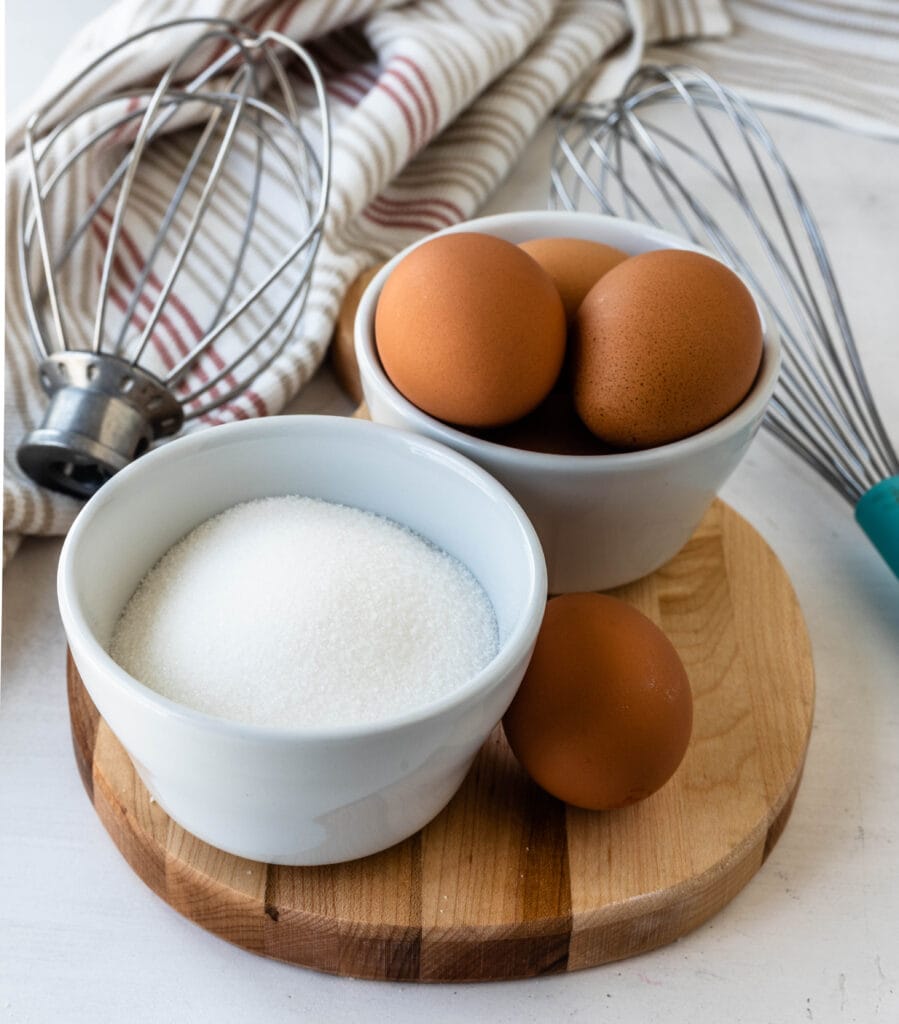
Can I flavor the macaron shells?
Yes you absolutely can flavor the macaron shells. I do believe we should focus on the filling when thinking about flavors. However, in some cases, it can be interesting to play with flavored shells. The flavoring will be subtle in most cases, but even a delicate layer of flavor can contribute to enhancing your macarons and making them even better. Attention to detail is what makes you go the extra mile.
The main way I like to flavor my shells is by adding powder flavorings as such:
- Freeze dried fruit powder (Strawberry Macarons)
- Espresso Powder (Coffee Macarons, Tiramisu Macarons)
- Matcha Powder (Matcha Macarons)
- Cocoa powder (Hot Chocolate Macarons, and many other)
- Vanilla Bean (Vanilla Bean Macarons, Creme Brulee Macarons)
- Powdered nut flours (Hazelnut Macarons, Pistachio Macarons)
- Spices (Cinnamon Roll Macarons)
- Cereal Powder (Cinnamon Toast Crunch Macarons – sprinkled on top)
You can also add a bit of extract. I don’t usually add anything over 1/4 tsp, but that’s up to you to experiment and see what your batter can handle. I recommend adding any extract at the end of whipping the meringue, once it has already achieved stiff peaks, then mix briefly to combine the extract and proceed adding the dry ingredients as you would.
Always be mindful about the amounts you are adding too. Spices such as cinnamon, turmeric, can totally affect the meringue and the protein bonds. Cocoa powder can make shells wrinkly, or too dry. Powdered flours can make the texture lumpy, and the feet wonky. Sprinkling powders on top of the shells before baking can cause them to crack if you add too much, or powders with high fat content. Adding too much freeze dried fruit powder can cause the batter to be too dry and stiff.
Another great idea is to flavor the shells by swapping the brown sugar for granulated sugar. I have attempted it for my book Macaron School and it was a success so I will post it to the blog soon as well. The brown sugar lends nutty and caramel notes to the shell, very moreish.
Can I substitute the almond flour for something else when making macarons?
Purists will say against it. I’ve seen discussions in groups where people are very against making macarons with anything other than almond flour. I don’t share of that philosophy. There can be a number of reasons why someone can’t or doesn’t want to use almond flour: allergies, budget, accessibility to ingredients between others. And yes, maybe they won’t be “authentic” macarons, but even the authentic macaron itself has gone through a major evolution since it’s been invented. Innovating and finding solutions that include more people is always a great idea to me, so I am all about trying different flours for macarons.
Anyway, I get this question a lot in all different forms. I get asked things like:
- Can I use just pistachio flour for making macarons? Or hazelnut flour?
Technically yes, you can. However, depending on the nut you are using, it will change the look of the macarons. I’ve tried making with hazelnut flour, the grain of flour was way too thick, and no matter how much I processed it, it wouldn’t get any smaller and would start to release oils. Hazelnuts have a higher fat content than almonds.
And pistachio flour will work almost the same as almond flour. Pistachio has a similar fat content as almond does so you should be able to find a brand that sells very fine pistachio flour. And the reason why I recommend buying it instead of making the pistachio flour yourself is just because you will need a lot more nuts to obtain 105 grams of pistachio flour, since during the grinding process, a lot of pieces will be impossible to grind down to a fine grain unless you have a super powerful food processor. Using a regular food processor, it will make the nuts start to release oils if you continue to grind it too long. It can be done, but you’ll have to be careful with releasing oils during the grinding process, and also have in mind that you will for sure need more nuts than just 105 grams.
And as a side note, you can use the leftover larger grains of pistachio that didn’t grind down to a fine grain and couldn’t pass the sifter for making buttercream, or decorating the tops of the macaron shells with a drizzle of chocolate.
Natalia Mendonça from @nat.mendonca uses peanut flour on her macarons!
I don’t recommend using nuts such as macadamia or pecans, they are extremely high in fat content and I don’t believe it’s possible to make a fine and dry flour from those nuts.
- Can I use all-purpose flour for making macarons?
Yes you can. I’ve made it before, and found the batter a bit thicker, and it definitely takes an adjustment in verifying you’ve achieved the proper consistency. I had made a mental note of reducing the all-purpose flour down by 10% on my next attempt, which I never did, but I will soon and will come to update this post when I do.
So generally, the batter will feel thicker, so it might seem like you need to continue doing the macaronage when in reality you’d have already reached the perfect spot. Pay attention to that. And also have in mind that the taste and texture will be different.
The macarons will be completely full, and have a chalky taste. But once you fill them and let them mature, they will absorb the flavors of the filling and come together beautifully.
- Can I use coconut flour for making macarons instead of almond flour?
I have found some people reporting success with this. They use way less coconut flour. Since I haven’t tried any recipes yet, I won’t give out any measurements, but I will attempt soon. Just know for now that it is possible.
- What are some flour alternatives to almond flour in macarons?
A lot of people in the vegan macaron scene like using Sunflower seed flour. I haven’t attempted yet, but Nicole from Bake Toujours has, here is her video. Besides that, what we mentioned above, some nuts might be ok to substitute. Coconut flour might also be ok, but needs a lot of adjustment, and all-purpose flour will work with some adjustment as well.
So if you are going to make macarons with substitutes for someone, for an event or an order, I recommend giving yourself time to practice at least once before, or twice if you don’t get it right at first.
How to obtain a vibrant color?
The short answer is to add a lot more food coloring. Or you can also try to find a powder food coloring which is highly concentrated, such as The Sugar Art master elite powders. Those powders can be very potent, even adding 1/4 tsp of them might be too much, so they are worth looking into if you feel intimidated to add a lot of gel food coloring to your macaron batter.
I have a whole article about food coloring here. The kinds I use, how to pick the best food coloring for you, etc.
What do I do if my macarons are crunchy?
I have an amazing tip for this. If your macarons were over baked, or if you live in a dry weather environment and your macarons will sometimes come out crunchy, I have a very easy and simple solution for that.
Place a sugar bear, or a slice of bread inside the container with the filled macarons. And then cover and place the container in the fridge overnight. After 24 hours the macarons should have soften up nicely. If not, leave another day.
Don’t let the bread or the sugar bear get into direct contact with the shells. Place a layer of plastic wrap in between them to keep them from touching.
Brown Sugar Bear is made of terracotta and the way it works is that it lends moisture to the sugar in the macarons. The same way the slice of bread works. It lends moisture to the macarons, making them soften up.
I used to live in upstate New York and during winter it would get really dry in my house, the macarons would often times become dry and crunchy and this trick always worked. Now I live in Florida and the macarons are extremely soft, chewy, and perfect.
What macaron method is best for beginners?
The first method that really worked for me was Swiss. I find Italian to have too many steps, and French to produce a less stable meringue, which can be more prone to issues if you are a beginner.
Swiss produces a more stable meringue than French because it introduces heat when melting the sugar before whipping it with the whites, which increases the viscosity of the sugar syrup that coats the air bubbles in the meringue, and it also helps with the unfrilling process of the egg whites which results in the protein structures that form the meringue. All this to say that both Italian and Swiss methods are known for producing a more stable meringue for those reasons. However, the French method is simpler as far as the steps and number of dishes go.
It’s all a matter of preference. If you feel inclined to experiment with a method or specific recipe, then do so, and continue to experiment and evolve in your macaron practice. Swiss works for me, but others swear by Italian or French, and that’s fabulous!
Can I freeze macarons?
Yes, you can and should freeze macarons! They freeze beautifully.
You can freeze filled macarons or just the shells.
To freeze macaron shells place them in an air-tight container, and then place them in the freezer for up to 2 months, maybe even more, some people leave them for even 6 months.
And to freeze filled macarons, it’s best to let them mature overnight in the fridge first, and then place them in the freezer for up to 1 month, maybe more, depending on the filling.
Also be careful when freezing filled macarons if you are using a wet filling such as curds or jams. Depending on how soft the shell already was, and on how wet the filling is, the shells can become soggy after some time. If you are making the jam or curd yourself, try to make it as thick as possible, or look for a brand of store-bought jam/curd that is thicker.
Another trick is to brush the bottom of the shells with chocolate and letting it dry before filing the shells with the jam or curd. The chocolate layer will act as a barrier, slowing down the hydration of the shell.
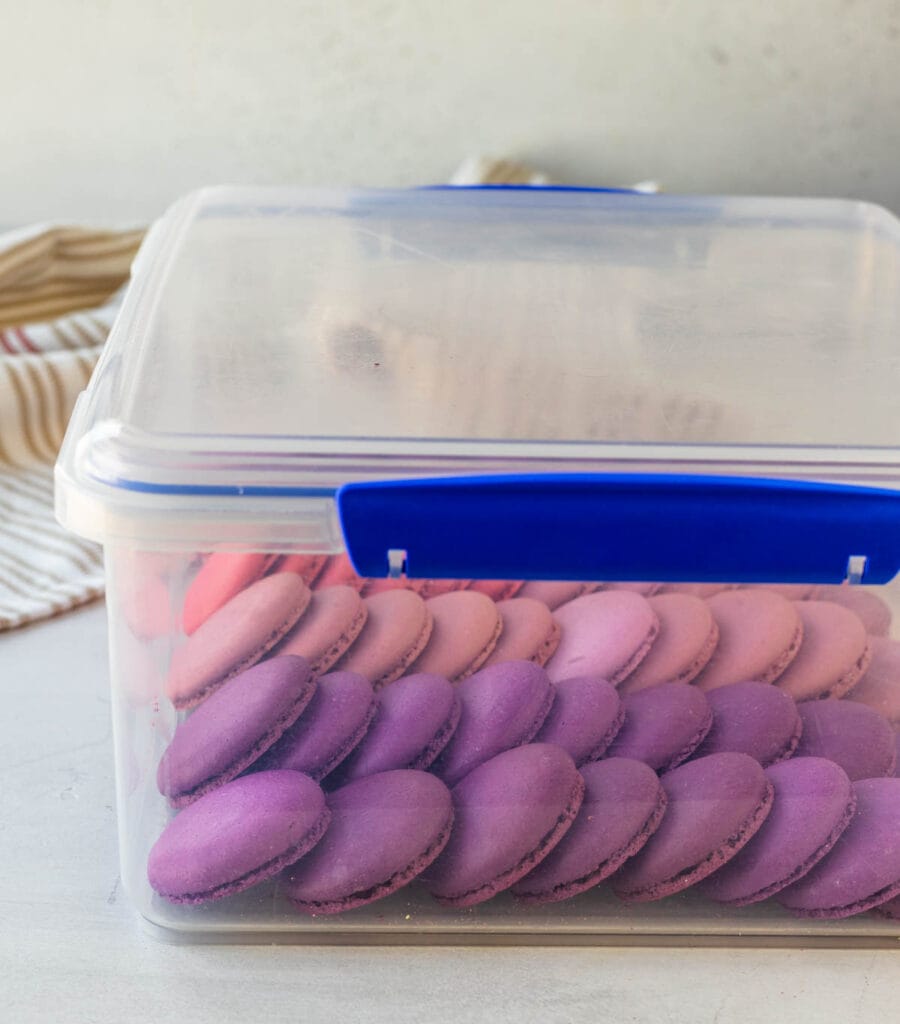
What does the maturing process do? What does it mean to mature macarons?
Maturing macarons means to let the filled macaron sandwiches rest in the fridge overnight (or longer) before serving.
During this period, the macarons will go through a hydration process, the shells will absorb the moisture of the filling, which will change the texture and overall flavor of the macarons. The flavor will become more intense, and the texture will become soft and chewy.
Your macarons might need longer than just 12 hours of resting. Specially if you live in a dry climate, or if the shells were over baked, or if your meringue was too stiff, etc. In some cases, I’ve left my macarons maturing as long as 48 hours.
Should I age the egg whites before making macarons? What does it mean to age the egg whites before making macarons?
I’ll start by saying that I don’t age my egg whites, at least not on purpose, but sometimes, if I am making a dessert with egg yolks for example, the egg whites will sit in my fridge for a day or two and this will have aged them.
It is my understanding that some people really swear by it, so it’s worth it experimenting with it if you wish. I have experimented with it, and even sometimes when I inadvertently age them, I don’t notice any differences, so I don’t go out of my way to make it happen.
Aging is supposed to allow for some of the water content of the egg whites to evaporate, leaving you with a more protein-concentrated egg white. And it makes sense that a more protein-concentrated egg white would help your macarons, since that’s the reason why we even add egg white powder to our meringue, to increase the concentration of protein in the egg which produces a more stable meringue.
However, the difference to me is not very noticeable when it comes to aged egg whites.
How long should I beat the meringue when making macarons?
There isn’t an absolute certain answer for this. It will vary wildly depending on the eggs you are using, the climate, even the altitude, and of course, the method you are using, the mixer you have, what speed you use, etc.
So my recommendation is to not pay attention to the time you should be whipping, but on what to look for in a perfectly whipped meringue.
The peaks should be shooting straight up and not bending down to the side.
Speaking for myself, it takes me 10 to 15 minutes to beat the meringue to stiff peaks. I start by whipping on low (speed 2 of the kitchenaid) for about 30 seconds, and then I increase the speed to 4 and whip there for another 2 minutes or so. Lastly, I increase the speed to 6 and finish whipping for the remainder of time, until the meringue achieves stiff peaks.
To read more about the science behind the meringue, click here.
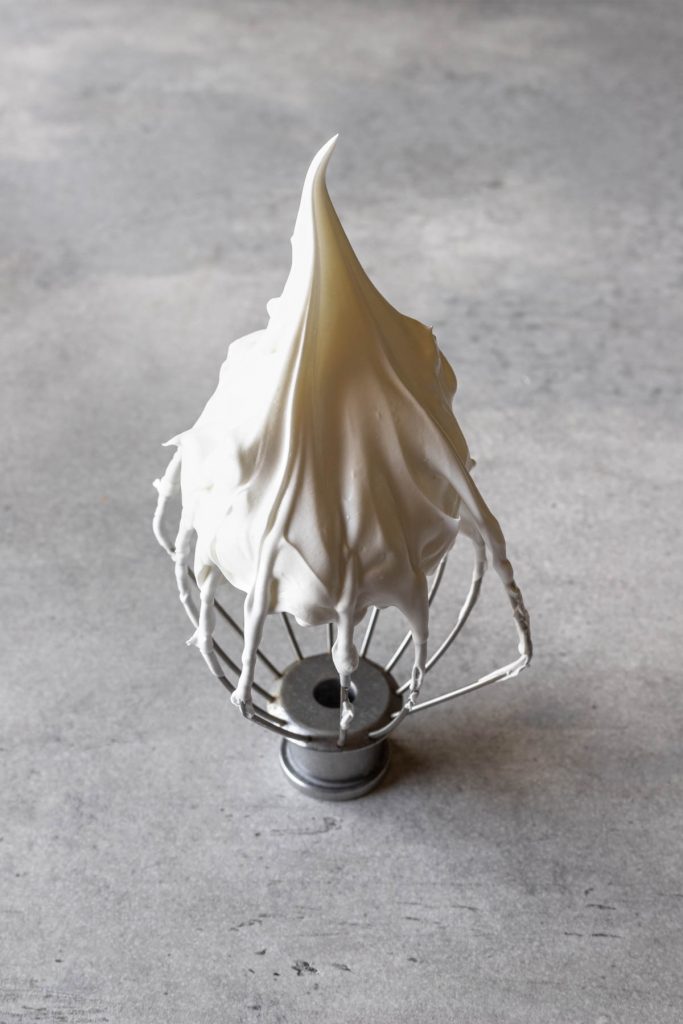
I hope you enjoyed today’s post and that I was able to answer some of your questions.
To read more articles like this visit Macaron School, there I share a lot of articles from troubleshooting guides, tips, tricks, the science behind macarons, and much more!
Thanks for reading!



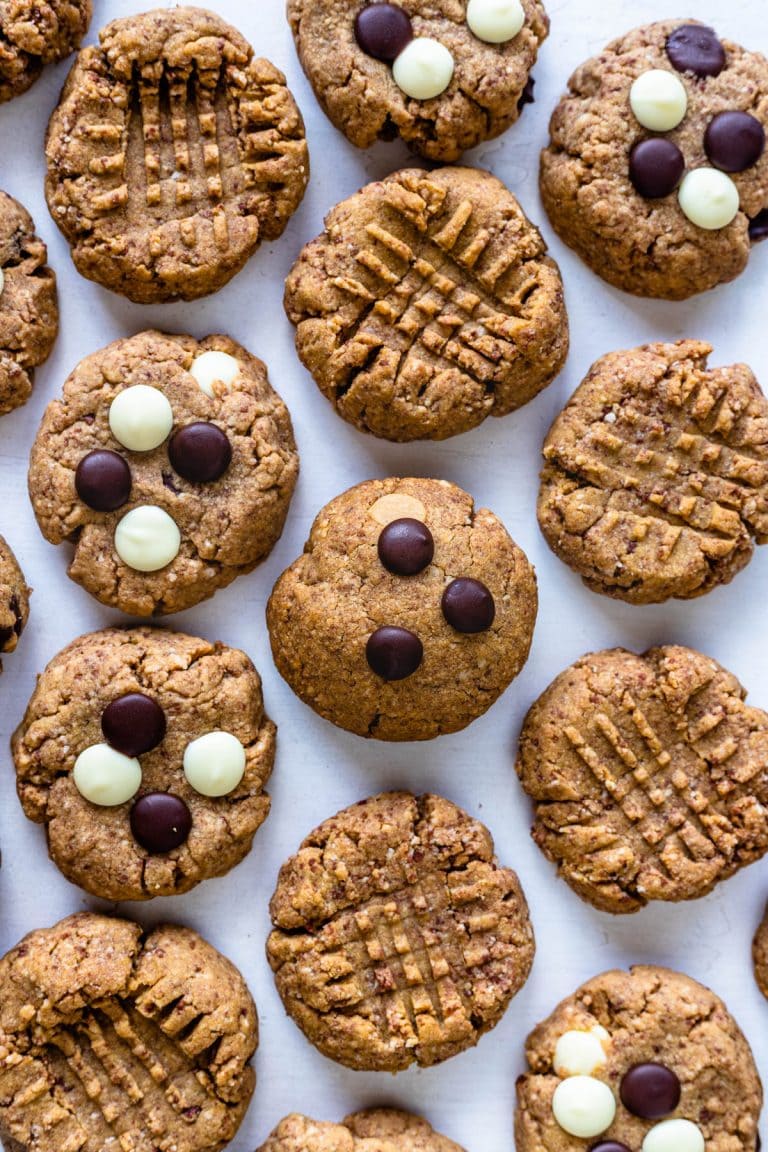
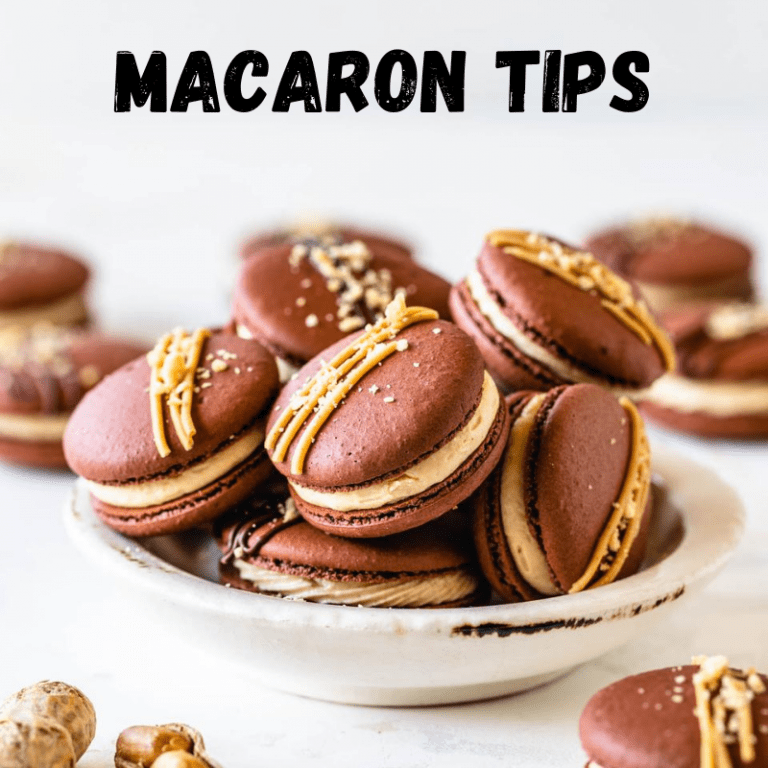
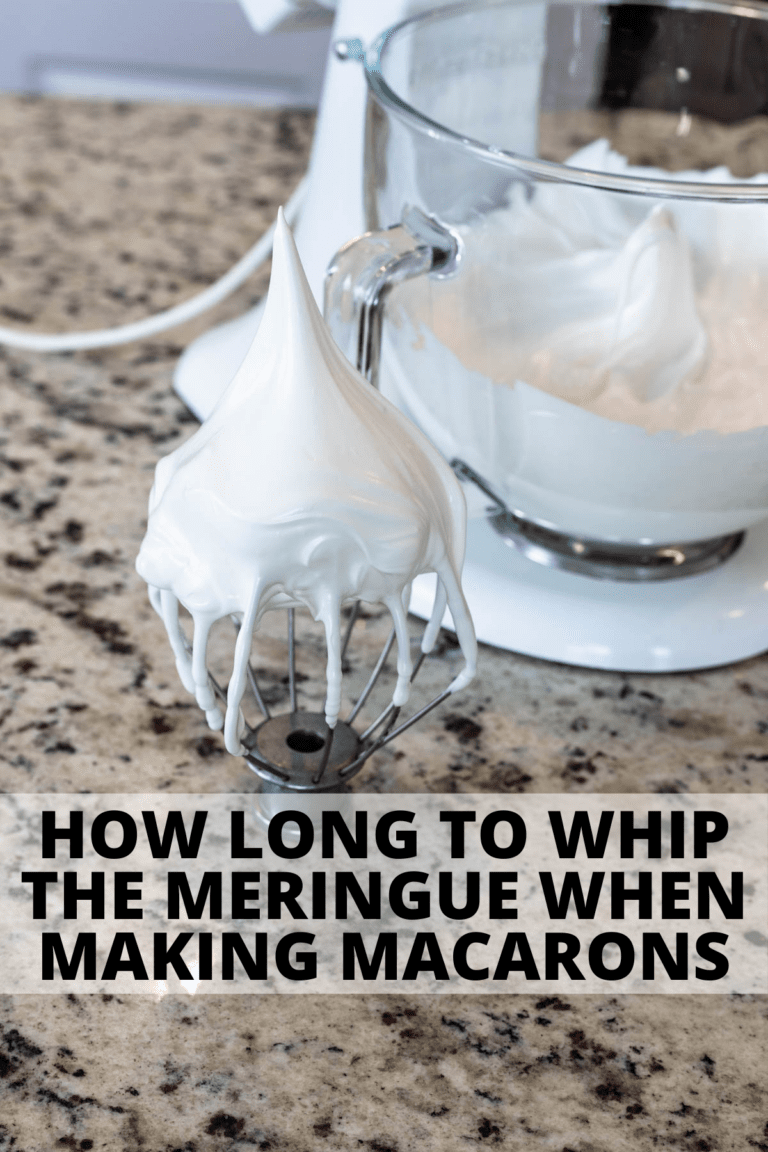
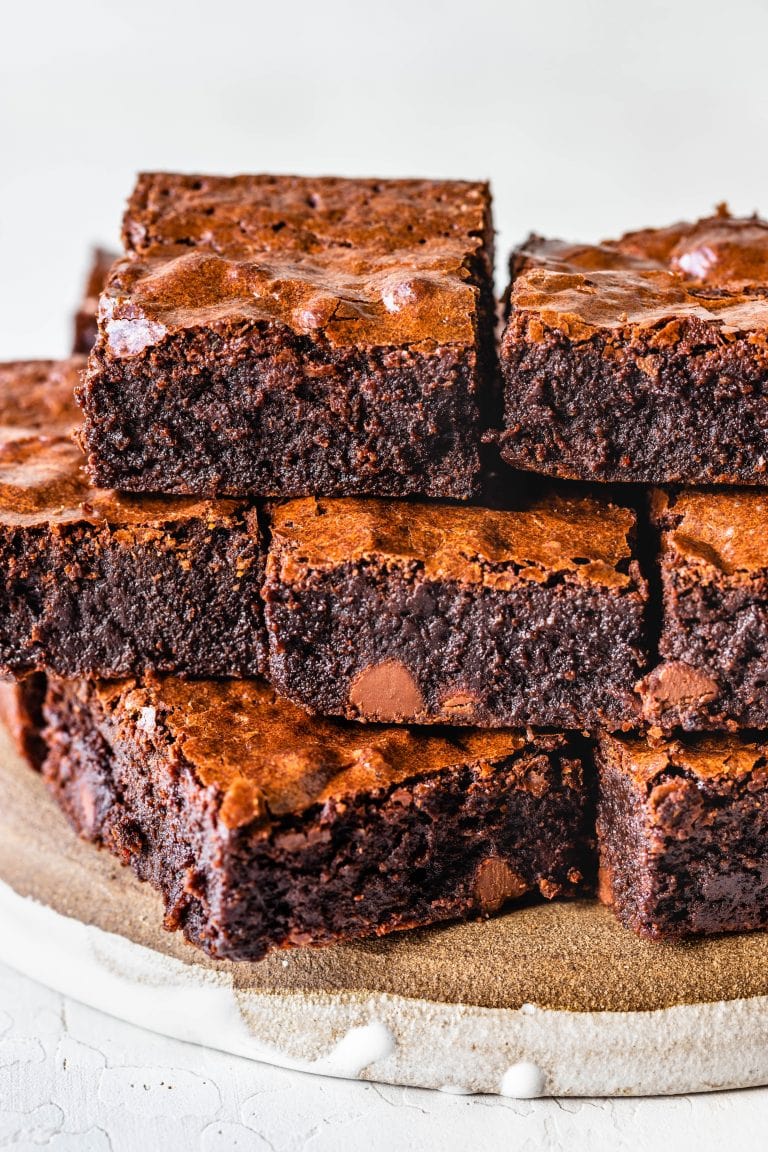
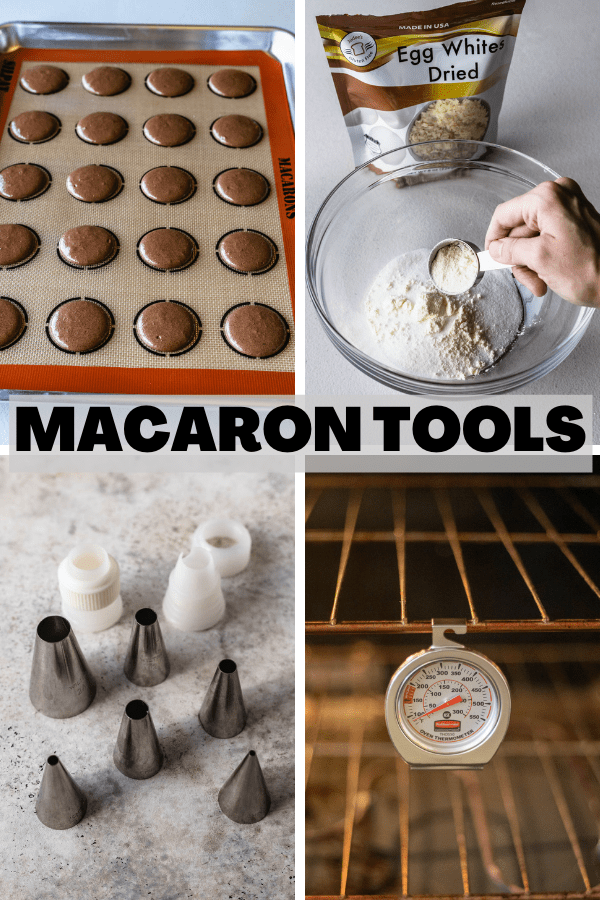
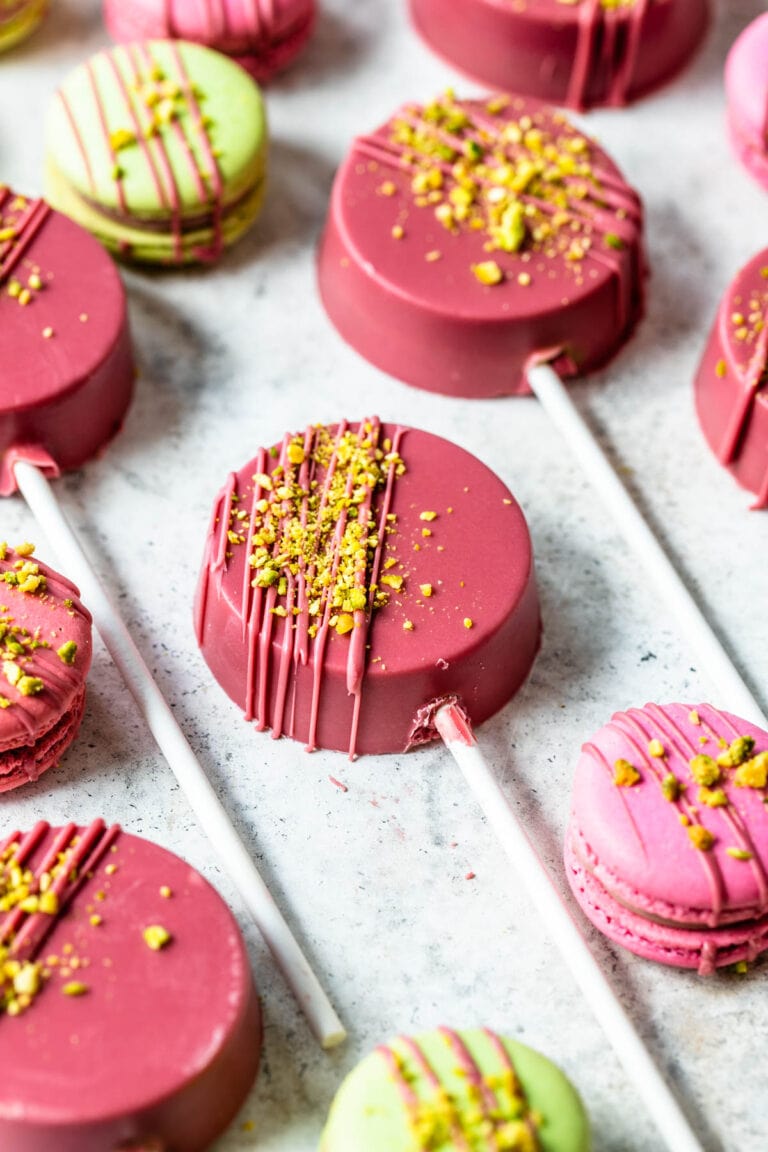
Ola camila
O meu e carima e a sua história marcou me bastante, tenho 54 anos e vivo em Angola . Mudei me de Portugal para Angola ha 11 anos.
Escrevo lhe em português porque calculo que seja brasileira.
A sua história e muito parecida com a minha procuro um caminho na minha vida, algo que me interesse, adoro cozinhar, doces. Dizem que cozinhar para outros e uma forma de distribuir o amor, de amar.
Tenho dias que entro em depressão mas quando entro na cozinha parece que tudo muda.
Adoraria começar a fazer os macarrons. Pode me dar algumas sugestões ? Como iniciar, há quanto tempo faz, onde comprar os melhores produtos,
Quais foram os passos que tomou inicialmente
Agradeço lhe desde todo o apoio que me possa dar,
Carima
Ola Carima, tudo bem? Agradeço o carinho. Para comecar a fazer macarons recomendo assistir muitos videos e ler artigos de fontes diferentes para ter bastante informacao que vai te ajudar na hora da prática, e aí vem a prática mesmo, precisa praticar e fazer bastante pra conseguir melhorar e evoluir porque fazer macarons é uma jornada mesmo de aprendizado. Sobre onde comprar os produtos, acho que vai ser diferente na sua região mas eu uso muito a Amazon.
Obrigada e abraços.
Dicas preciosas!!!!!
Hi Camilla, thank you very much for your fabulous blogs they have helped so much.
Just a question regarding cooking tome I put my macarons at 150( not fan) and they take 22 minutes, you mentioned in your blogs that you take 10 minutes, I understand every oven is different, what do you suggest please. Kind regards Jenny
Hi Camilla,
This post was super helpful! Thanks for all the info. I just started testing my skills with macarons in the last few years and I’m trying really hard to perfect my skills.
I was hoping to freeze some macarons for an event but I had a few questions. If I freeze them filled, how long should I have them out before serving them? Would I need to put them in the fridge first? And if I freeze empty shells, do they need to be room temp before I can fill them?
Thanks for your help!
Nici
you can serve them straight from the freezer. they have to sit at room temp for like 30 minutes or so. and if you freeze empty shells you can fill them straight from the freezer.
Hi there! Thank you so much for you sharing your recipes and all the tips! I am just getting started, having made my second batch of macarons this week and they have been turning out beautifully. I’m a little confused on oven temperature. I realize the importance of having an oven thermometer to know the actual temperature but it seems there are varying temperatures across recipes from 310 to 325. Is there a “recommended” temperature that I should be looking for on my oven thermometer or just more to gauge where the actual temp is versus the setting? Thanks again!
I used to use 325 on my old oven but use 310 on my new oven, and 280 or 290 on my countertop oven. temperature varies greatly from oven to oven.
Thank you for clarifying the temp you used for your old oven and new oven. Your book and older recipes say 325 and my macarons has been coming out a bit crispy, even when I reduce the time. I’ll try 310 and see if there is improvement. (I do use an over thermometer. Thank you for emphasizing its importance!)
Hello! Thank you for sharing your recipes and tips! When freezing the shells, is it ok to stack them on top of each other where they sit on each other? Or will this flatten them? Thank you!
yes it is ok
Hello! Thank you for sharing your recipes and tips! When freezing the shells, is it ok to stack them on top of each other where they sit on each other? Or will this flatten them? Thank you!
its totally ok.
Why are my shells hallow even after maturing in the fridge filled for 24 hours??
I recommend reading this article: https://www.piesandtacos.com/hollow-macarons/
I want to make some macrons with carton egg whites, should I add cream of tarter or egg white powder to stabilize or will I just need to whip longer to get to stiff peaks?